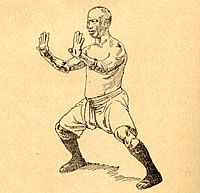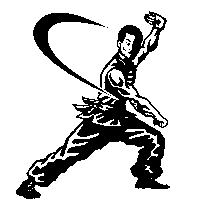Just about every martial art, traditional or non-traditional, has weapons defenses or techniques. So why do most martial arts train them in such different ways compared to how we train empty hand techniques.
So whether we like it or not weapons are a reality of the societies we live in. Whether you live in the safest area of town or the worst part of town you could find yourself being attacked by someone. In most cases the person who is going to attack you on the street will feel like they have some kind of advantage over you to do so. They are going to have the confidence to attack you and feel like they can dominate you and control the situation. They are going to have this sense of confidence and advantage in one of several ways. They will feel that they are much bigger and stronger than you and can use this to overwhelm you. They may have another person or several other people to help them to give them an advantage of numbers. Or they are going to have a weapon like a knife, bat, screwdriver, machete or a gun. Who knows, there are lots of potential object and tools that can be used as a deadly weapon.
So with this in mind how well are we prepared to defend ourselves against these potential threats. Granted you should always do whatever they are requesting of you in terms of giving them a wallet/purse or piece of replaceable material things. DO NOT escalate the situation if you can simply give away something as meaningless as money to a drug addict or thief and go home alive. What we are talking about here is an attack that comes unexpectedly or one that comes after you have already complied and now they want to kill you anyway.
For this article we are going to look at just dealing with a knife and break down how to train for this. We need to have structure to this the same way we have structure in everything else we train in the martial arts. First we need to learn some basics. These basics are the techniques that we see almost every system of martial arts do. You need to learn what to do when a knife comes at you in almost every possible angle and what you can do from there. Unfortunately this is also where most martial arts stop the knife training, and say that they know what to do and are prepared to deal with it. This is only the very beginning and basics. Once you have a sense of what to do it needs to be tested like you would anything else. We learn basic hand techniques to deal with certain strikes and then we drill them and eventually we free spar and try to use the techniques against someone who is really attacking us. So the individual techniques needs to be drilled over and over until the student can do it without thinking about it. The drills are being done while his partner is allowing him to practice by giving him a certain type of attack. This is the same way any school trains techniques to get it in the muscle memory.
Once a student has a toolbox of techniques that have been drilled they need to put them to the test. The next phase is to have a training partner come at you full speed and power at random with a single strike. This allows the student to begin to train for the reality of force from an attacker trying to cut or stab them. This too needs to be drilled over and over until you can react appropriately and not get stabbed or caught by one of the strikes.
The last Phase needs to be full contact and power, or free sparring with the training knife. Students have to learn how to close the gap, evade a strike and properly position themselves to control the attacker using a mixture of the basic techniques they have in their toolbox, or at least the basic principles of these techniques.
This training is the same whether you are on your feet or on the ground. Also, we need to train these types of attacks against more than one person at a time as well to be able to understand how to create space and control a deadly attack from several people with weapons. You may feel somewhat confident after training weapons defense and disarms on your feet but what about on your back with someone on top of you. You can be the best grappler in the world, but if the other guy has a knife you are at a serious disadvantage. A knife can be passed from one hand to the next and easily plunged into the body while you are focusing on a joint lock or choke. We need to train these situations and be prepared to fight to survive.
So at the end of the day we as martial artists can ask ourselves one thing. Are we prepared to handle someone attacking us with a weapon? Are the martial arts we are studying preparing us to deal with a raw and overwhelming attacker who is determined to kill us, our someone we love.
What a shame to train our whole lives to only be a victim if and when an unfortunate attack should happen to us.
-Sifu Nick








